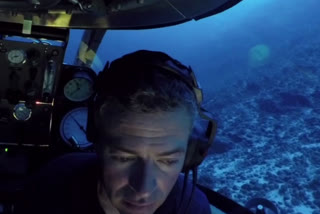Alphonse (Seychelles): Scientists from the Nekton "First Descent" Indian Ocean mission are carrying out tests around the remote Alphonse Atoll, part of the Seychelles. Researchers are expected to spend seven weeks surveying underwater life, using 17 different research tools, including two submersibles that will reveal the secrets of a world deep beneath the waves.
The Nekton science team is anchored off the remote Alphonse Atoll, some 400 kilometers south of Victoria, the Seychelles' capital.
Key to their research are two submersibles that can dive up to 300 meters. They're equipped with a number of sensors, cameras, and sampling tools.
The yellow submersible - named Kensington Deep - is what's called a "surveyor".
With powerful lights and advanced video systems, this sub will take the lead in exploration.
Pilot Robert Carmicheal has been working on subs for years, diving on numerous wreckages and scientific missions.
For all submarines, safety is paramount.
"It's perfectly designed for transect surveys, exploration, and going down and spending six to eight hours at depths of up to 1,000 feet, with a 96-hour life support system built into it," he says.
The second sub on this mission is called a "sampler".
It has the same operational capacities but is equipped to conduct various scientific missions.
